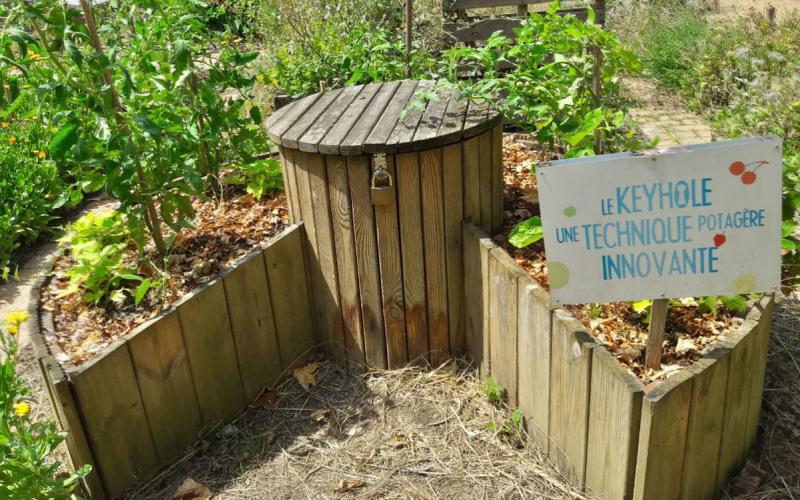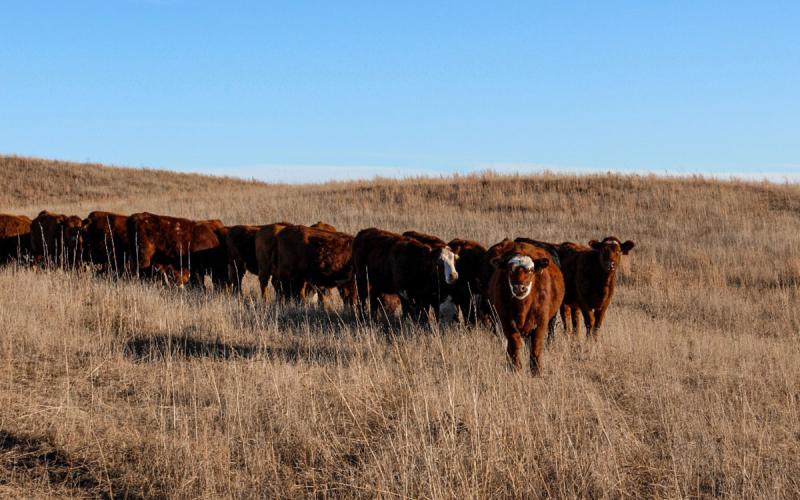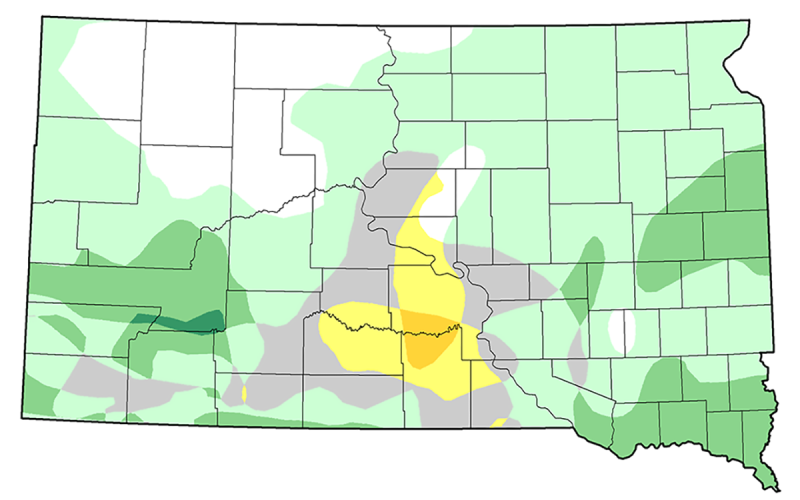BROOKINGS, S.D. - While recent rain and snow have brought some moisture reprieve to parts of South Dakota, the same cannot be said for the northwest or central part of the state. South Dakota State University (SDSU) Extension State Climatologist Laura Edwards says warmer-than-average temperatures and zero-to-near-zero precipitation are continuing to exacerbate already parched conditions.
"According to the latest U.S. Drought Monitor, nearly 95% of South Dakota is in some level of drought, including 19.42% that is classified as Extreme Drought (D3) in the north central region," Edwards says. "If this region continues to stay in that D3 category into summer, we will start to see impacts, such as burn bans, significant row crop loss and the need for supplemental feed and water for cattle."
On May 10, SDSU Extension will continue its virtual educational program series, Drought Hour. Every Monday through May 24, from 11 a.m. to noon CST, participants are invited to join the online conversation and stay ahead of drought impacts with climate updates, business insights and the latest research-tested management tips for farms, ranches and properties of all sizes.
The May Drought Hour webinars will cover the following topics:
- May 10: "Weathering the Storm in Agriculture: How to Cultivate a Productive Mindset," Krista Ehlert, Assistant Professor and SDSU Extension Range Specialist, and Heather Gessner, SDSU Extension Livestock Business Management Field Specialist
- May 17: "Drought Mitigation: Fire and Forage," Jessalyn Bachler, SDSU Extension Range Field Specialist, and Sara Bauder, SDSU Extension Agronomy Field Specialist
- May 24: "Climate Update," Laura Edwards, SDSU Extension; and "USDA Drought Relief Programs," Jamie White, United States Department of Agriculture Farm Service Agency State Executive Director
There is no fee to attend, but participants will need to register for the weekly webinars on the SDSU Extension Events page. Confirmation Zoom links and reminders will be emailed to attendees.
In addition to the weekly webinar series, SDSU Extension has devoted an entire page on the Extension website to addressing drought concerns. To receive regular updates and the latest resources on drought conditions, South Dakotans are also encouraged to subscribe to Extension's newsletters.
Edwards also encourages South Dakotans to help monitor local drought conditions by signing up to become a Community Collaborative Rain, Hail and Snow Network (CoCoRaHS) observer. Observers will need to use the "condition monitoring report" option on the CoCoRaHS website or the app.
"If people are not registered CoCoRaHS observers, they can also submit a description of drought impacts directly to the Drought Impact Reporter at the University of Nebraska," Edwards says. "Either way, these drought reports and impacts are shared directly with the U.S. Drought Monitor authors every week and are not tied to any individual name. Locations are usually specified just to a county level."
The National Drought Mitigation Center, in partnership with the National Integrated Drought Information System, the USDA and others, encourages people across the United States to submit photos and fill out a small corresponding survey on the Condition Monitoring and Observation Reports on Drought (CMOR-Drought) website or via Esri's mobile app, Survey123. The NDMC recently published a new fact sheet and video tutorial that people can use to teach themselves, and others, how to submit photos and survey responses to CMOR.


